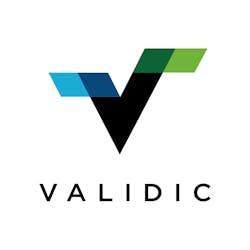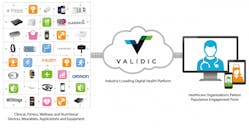A Pew Research study revealed that every seven out of 10 U.S. adults track their health data, and a growing number using digital health apps and devices; yet, only one in ten share that data with a clinician. This begs the question: in a world where consumers are compelled to share everything from thoughts on celebrity gossip to well-orchestrated videos of themselves being doused with buckets of ice water, do we actually have a sharing problem? Clearly not. What we have is a data access problem.
Patients do not have a simple mechanism and compelling reason for sharing their digital health data with healthcare professionals. Likewise, healthcare professionals do not have a systematic way of accessing actionable, patient-generated health data. This disconnect inhibits clinicians from providing preventative care, making more informed patient decisions, uncovering medical breakthroughs, and gaining valuable insights into high-risk patients’ day-to-day activities.
This digital health divide is largely due to health data accessibility challenges that have persisted for decades. Instead of an interconnected healthcare system, healthcare in the United States is largely comprised of individually operating entities, each generating its own silo of patient data. HIPAA Omnibus, HL7, Continua, Blue Button, and other initiatives have had some impact on breaking down the data silos, but have fallen short of eliminating them.
Interoperability is not a new idea, but it can be revolutionary. Solving healthcare interoperability challenges today would save $30 billion annually in the United States alone. To bridge the digital health divide, interoperability is the solution.
The solution must operate with an open philosophy, supporting all platforms and working with every stakeholder in the healthcare community. It must be device- and platform-agnostic. This is the only way to deliver true interoperability in healthcare, to bridge the divide between patient data and the healthcare system, and fix the problems that have burdened healthcare for over 50 years. No one company and no single approach will solve the health data portability challenge.
There have been successful investments in digital health interoperability from leaders such as Kaiser Permanente with virtual visits and My Health Manager to improve patient engagement and population management strategies. Sutter Health and the Palo Alto Medical Foundation (PAMF) have focused on providing new models of preventative care centered around an approach of collecting data from a wide variety of remote-patient monitoring devices. This allows PAMF physician teams to intervene before a negative health event occurs.
Patients are already using using digital health devices and applications in their everyday life, from the healthy to the chronically-ill. For this patient data to be truly useful, it must be accessible by and actionable for healthcare professionals. This vision of interoperability is what we at Validic strive to achieve every day. Working together, we can reach a new standard of interoperability that will improve the quality of care, deliver better outcomes and substantially lower healthcare costs.
About the Author:
Drew Schiller, Co-founder and Chief Technology Officer, Validic




